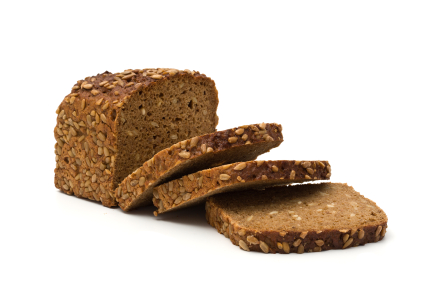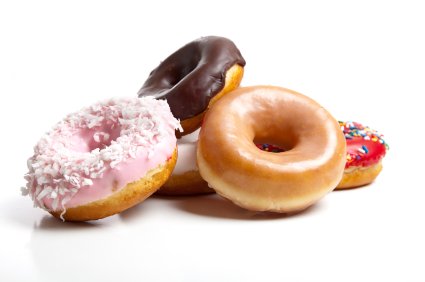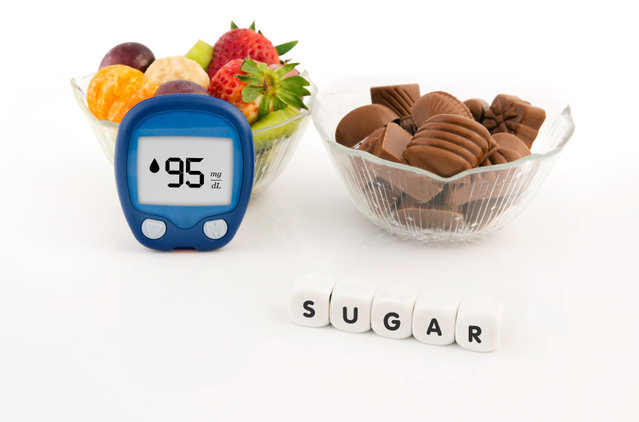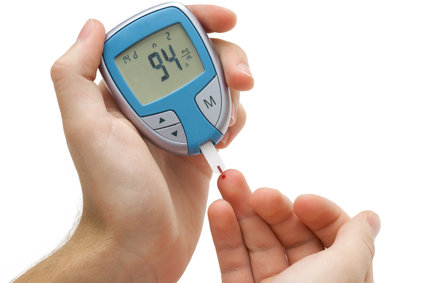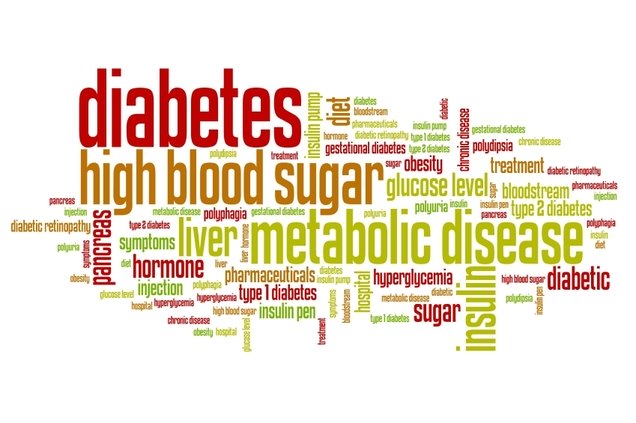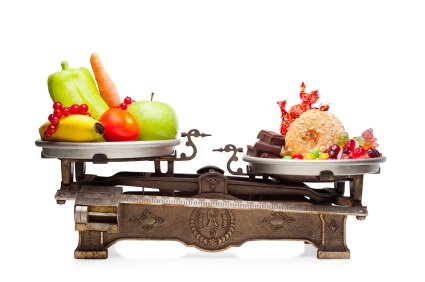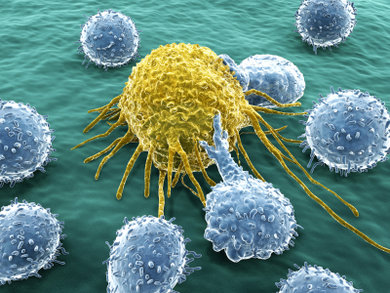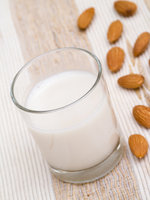The Skinny on Low Glycemic Diets and the Glycemic Index Food List
What is the Glycemic Index or GI of a food and why is it important for Low Glycemic Diets?
A food’s Glycemic Index (or its “GI”) score measures how quickly the carbohydrate in that food raises blood sugar levels. The GI values range from 1, representing the slowest rise, to 100 (the rating for pure glucose) representing the fastest rise in blood sugar. A Low GI Diet would try to include foods with low scores.
Generally the slower a food raises blood glucose, the better.
Strongly fluctuating blood sugar can result or worsen conditions like diabetes, cardiovascular disease and obesity.
|
Balanced Diet |
Calories |
Food Labels |
My Plate |
Organic |
Vitamins? |
|
Inflammation |
Antioxidants |
Low Glycemic |
Vitamin C |
Cancer |
Omega 3 |
The Glycemic Index Food List helps people compare the
quality of carbohydrate contained in different foods in respect of how
it affects blood sugar. This help them craft more easily a Low Glycemic
Diet.
Some foods, like eggs and meat, have negligible GI scores and, therefore, little effect on blood sugar. This is because they contain little or no carbohydrate. Eggs and meat are comprised primarily of fats and protein, not carbohydrate.
Fat and protein hardly budge blood sugar!
How is the GI score for a food determined?
The Glycemic Index Food List is assembled by comparing blood tests among several individuals.
Fasting blood glucose levels are measured before and immediately after a person consumes a 50 gram portion of food, as well as at intervals over the next two hours. The individuals’ blood is measured after eating pure glucose as well. By calculating the difference between the food and the glucose's effect on blood sugar and averaging the results among individuals, researchers establish that food’s Glycemic Index Food List score.
Determining a food’s Glycemic Index score is complicated business.
To read more on how Glycemic Index scores are generated, check Sydney University’s Glycemic Index Foundation site. How researchers establish a food's Glycemic Index value
Thinking of Skipping Carbohydrates Altogether? – Not so fast. You need carbohydrates as part of any healthy diet including a Low Glycemic Diet
We can’t live without carbohydrates. They’re essential as we learned on the Healthy Balanced Diet page. Carbs supply the energy, along with lesser amounts of protein and fats, we need to function mentally and physically.
| Low Glycemic Diets leave you Feeling fuller Longer – High Glycemic Load diets lead to hunger sooner Researchers from Georgia State University in a study of |
As well, many of the foods comprised largely of carbohydrate like vegetables, fruits, legumes and grains are chockablock with beneficial vitamins and minerals and other nutrients, many of which are essential for a healthy diet.
The key is to make your carb choices ones for a low glycemic diet.
Nutrition experts vary on how much of our diet should consist of carbohydrates. Some experts, like the USDA, advise 50 to 55 % of our calories should be made of carbs; others suggest up to 2/3 of our calories should be carbohydrate based; while low carb advocates like Barry Sears of the Zone Diet suggests a limit of 40% of calories from carbs. Because fat and protein are more calorie rich per gram than carbohydrate, carbohydrate foods will comprise a greater volume of our diet than the percentage of calories might suggest.
Knowing the effect a food’s carbohydrates have on blood
sugar can guide you to healthier foods and food combinations found in low glycemic diets
that will help you maintain more consistent blood glucose levels ... and
avoid repeated spikes or dips.
This, in turn, can help you avoid or control serious medical conditions as well as lose or control weight.
Why do repeated rise and falls in blood sugar matter?
Controlling the rise and fall in blood sugar is important because it affects the function of insulin, the hormone released into the blood stream when blood glucose levels get too high.
| High Glycemic Load Diets May be bad for your Heart Researchers at Harvard studying 75,521 over ten years found that a high Glycemic Load Diet high in refined carbohydrates disposed women to a greater risk of coronary heart disease, especially those who are overweight. Reported in the American Journal of Clinical Nutrition, June 2000. |
Too much sugar in the blood is bad for many organ systems, including blood vessels (the vascular system), the eyes, brain, kidneys and heart. Excess blood glucose also affects white blood cells and lowers immune function. To prevent damage from high blood sugar, insulin gets in the mix and escorts the excess sugar from the blood stream into cells where it provides energy. If not needed immediately, the energy can be stored as glycogen in the liver or as fat for later use.
When blood sugar spikes repeatedly over an extended
period, the body may lose its responsiveness to insulin. The
result may be that excess sugar circulates in the blood. This unresponsiveness to insulin is a condition variously called
insulin resistance, prediabetes or metabolic syndrome, which can progress, if not controlled, to Type 2 diabetes (aka diabetes mellitus or non-insulin dependent diabetes). Press here for more on this in Metabolic Syndrome Diet.
The latter occurs when insulin levels rise, due to the excess blood sugar , but fails to remove any or enough glucose from the blood.
High insulin levels coupled with high blood sugar levels are hallmarks of diabetes.
... And don’t forget the link between blood sugar and weight management – an essential benefit of Low Glycemic Diets.
Spiking blood sugar levels, followed by surges in insulin can paradoxically lead to low blood sugar or hypoglycemia. Plummeting blood sugar can elicit feelings of hunger, cravings for sugar and carbs, dizziness, sweating and jitters. The result can be binge eating and obesity.
Maintaining even blood sugar is key to weight management including losing weight and maintaining a healthy BMI.
Why a food's Glycemic Index score is an important factor in Low Glycemic Diets for health and weight loss
Picking the right foods including those with a low Glycemic Index score can help regulate blood sugar levels. Foods low on the Glycemic Index can help minimize the repeated surges of insulin that occur in response to foods that score high on the Glycemic Index.
This is why knowing a food’s Glycemic Index Food List score and choosing those that generally have an overall lower glycemic effect can be good for your health.
|
What is Metabolic Syndrome? |
What foods score low on the Glycemic Index Food List? - What Foods Score High? – Fundamentals of Low Glycemic Diets
Generally, the Glycemic Index score will be lower for complex carbohydrates than those foods comprised mainly of simple carbohydrates.
Complex carbs are, no surprise, molecularly complex; the digestive system takes longer to break them down into the sugars that your body can use. It follows, the energy from complex carbs is released into the blood stream more gradually a than their molecularly less complex cousins.…
…simple carbohydrates are digested quickly and hit the blood stream with a bang!
Simple carbohydrates include many different kinds of sugar including sucrose and fructose - the sweet part of many candies and baked goods. Fruits, dairy products and honey contain a high proportion of simple carbohydrates including fructose, dextrose, maltose and lactose.
The advantage of this rapid rush of sugars into the blood stream is quick powerful energy; the disadvantage is it may rock blood sugar.
Complex carbohydrates include starches and fiber, like those found in wheat products such as bread and pasta; other grains like rice and barley; beans and lentils; and root vegetables. There is wide variation among carbohydrates on how they affect blood sugar. For example, the starches in potato have a quicker effect on blood sugar than the starches in oatmeal.
Because a food is a complex
carb doesn’t mean it will have a low GI. By
contrast, some simple carbohydrates like fructose, the carbohydrate
found predominately in fruit, hav a relatively gentle effect on blood
sugar compared to some of their simple carb cousins. Fructose, in fact, is metabolized more like a fat than a carbohydrate.
You cannot tell the effect a food will have on blood sugar by its appearance. You have to check its score on the Glycemic Index Food List.
Additional Factors Affecting Blood Sugar Levels other than a Food’s GI– More Hints for following Low Glycemic Diets - What else you eat may affect your blood sugar; along with the GI of a particular carbohydrate.
- Processing or refining a food generally increases its glycemic index, compared to unprocessed version.
- Fiber slows the absorption of food and helps regulate blood sugar.
- Foods rich in proteins and fats also slow digestion and will tend to have a calming effect on blood sugar levels.
- Ripe fruit often has a higher GI than less ripe because it contains more sugars.
- Food preparation may change how that food affects blood sugar – Mashing, grinding or flaking a food may make it easier to digest and, therefore, spike blood sugar more readily than foods left intact.
- How much you chew (another type of food processing) and how quickly you eat can affect how that food stimulates your blood sugar levels.
- Individual body chemistry affects how a food will influence blood sugar levels.
Why Glycemic Index Does Not Tell the Entire Story of Low Glycemic Diets - Glycemic Load.
Some foods that have a high glycemic index score, including many fruits and grains, are extremely healthful and should be a part of your diet because of the myriad vitamins, minerals and other nutrients they provide, aside from any possible affect on blood sugar. For example, bananas have a relatively high Glycemic Index score but are a good source of potassium, fiber and other beneficial nutrients.
By contrast, pure fructose (pure fruit sugar and an ingredient in many jams, baked goods and candies) and potato chips have a relatively low Glycemic Index (GI) compared to glucose or sucrose. Eating these sugar laden foods in excess only because they have a lower GI than other foods would not be a nutritiously smart move.
Simply, GI is not the only factor to consider when evaluating a food’s effect on blood sugar.
Certain foods have a high GI score but are comprised of a relatively small portion of carbohydrate. For example diced and boiled carrots have a GI of 49. However, an 80 g serving of those same carrots contains only 5 grams of carbohydrate – the effect on blood sugar eating this portion of carrots will be minimal.
It follows that, if you choose your food on the basis
of a low GI alone, you could miss the nutrients of this splendid
vegetable as well as those in other foods....so don't be a slave to GI scores. Instead, consider a food's overall Glycemic Load.
Glycemic Load – Measuring both the Quality and Quantity of Carbohydrates: Key to Successful Low Glycemic Diets
A more useful measure than GI alone, which tests the effect of the carbohydrate in a particular food on blood sugar, is the Glycemic Load. Glycemic Load not only measures a food’s carbohydrate effect on blood sugar; but also the amount of carbohydrate in the food itself.
Look at Glycemic Index (GI) as measuring the quality of a carbohydrate. By contrast, Glycemic Load (GL) measures both the quality and the quantity of the carbohydrate.
Glycemic Load gives the more complete picture of a food’s effect on blood sugar than GI alone.
Measuring Glycemic Index as well as Glycemic Load When Planning Low Glycemic Diets
In short, you can calculate the Glycemic Load of a food by multiplying the food’s Glycemic Index value by the number of grams of carbohydrate in the food and divide by 100.
Easier yet, hit this link for Sydney University’s Glycemic Index Foundation’s home page and use their GI and GL calculator.
Glycemic Index Foundation’s GI and GL calculator for Low Glycemic Diets
You can use the Foundation’s free tool to determine the Glycemic Index on more than four hundred foods or, if really interested, submit your own food to be tested for a fee. If American, beware that some of the food search terms reflect that Australia was part of the British Empire. For example, if you want to find the GI for “potato chips”; search “potato crisps”.
Tips for Low Glycemic Diets and Maintaining Even Blood Sugar Levels
- Be aware of the Glycemic Load of your food and emphasize those in your diet with a lower Glycemic Load and Glycemic Index.
- Include fiber in your diet, especially soluble fiber found in whole grains and legumes.
- Include some protein and healthy fats, when eating carbohydrate foods, in your meal, especially when eating simple high GI carbs. Protein and fats digest slower than carbohydrates and can help slow carbohydrate metabolism and its spike on blood sugar. For example, eat peanut butter with your whole grain toast or oat cake; or yoghurt with your banana.
- Reduce or eliminate processed foods especially those containing simple carbs and emphasize whole foods in your diet. Whole foods generally have a lower Glycemic Load than their processed cousins.
Interested in Learning More about Low Glycemic Diets and related issues? ...
|
Cancer Fighting |
Cancer Nutrition |
Breast Cancer |
Lung Cancer |
Inflammation |
Antioxidants |
|
Vitamin C |
Zinc |
Calcium |
Vitamin D |
Magnesium |
Constipation |
Click here to read more about Low Glycemic Foods for Low Glycemic Diets.
Glycemic Load and Glycemic Index are only two parts of the Healthy Balanced Diet. Click here, if you want to learn more about A Healthy Balanced Diet.
Press here for info on diabetes and diet.
Press here for comparison of the most popular Type 2 Diabetes diets.
Press here for info on blood sugar testing.
Click here to read more about a Metabolic Syndrome Diet.
Click here to read about Chromium and its effect on blood sugar.
Click here to learn more about Anti-inflammatory Diets.
Click here to learn more about Inflammatory Foods.
Click here to learn more about Anti-inflammatory Supplements.
Click here to learn about the Benefits of Organic Food.
Click here to learn about Calories.
Click here to learn about Omega 3s and other healthy fats.
For timely news and commentary on diet and health, click Healthy Diet News Blog.
To return to the Healthy-Diet-Healthy-You.com home page, click Healthy-Diet-Healthy-You.com.
